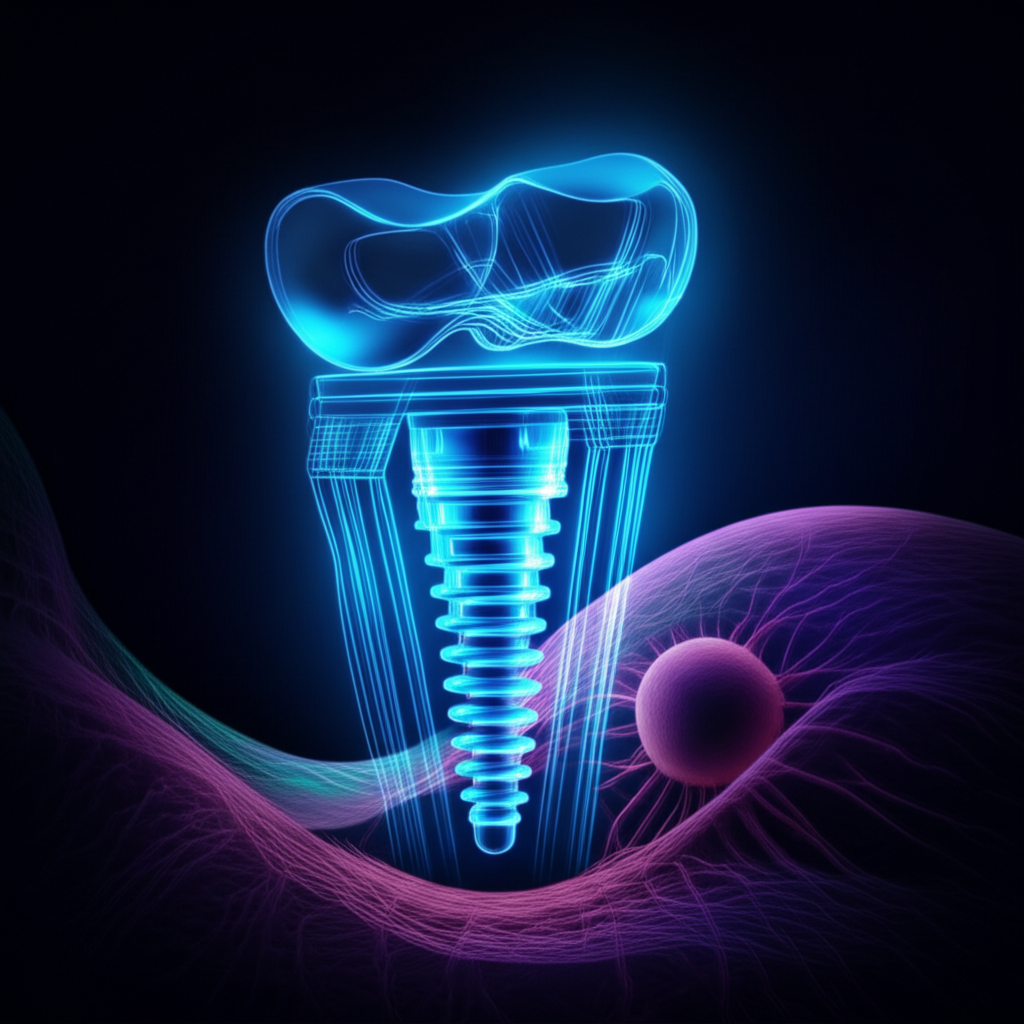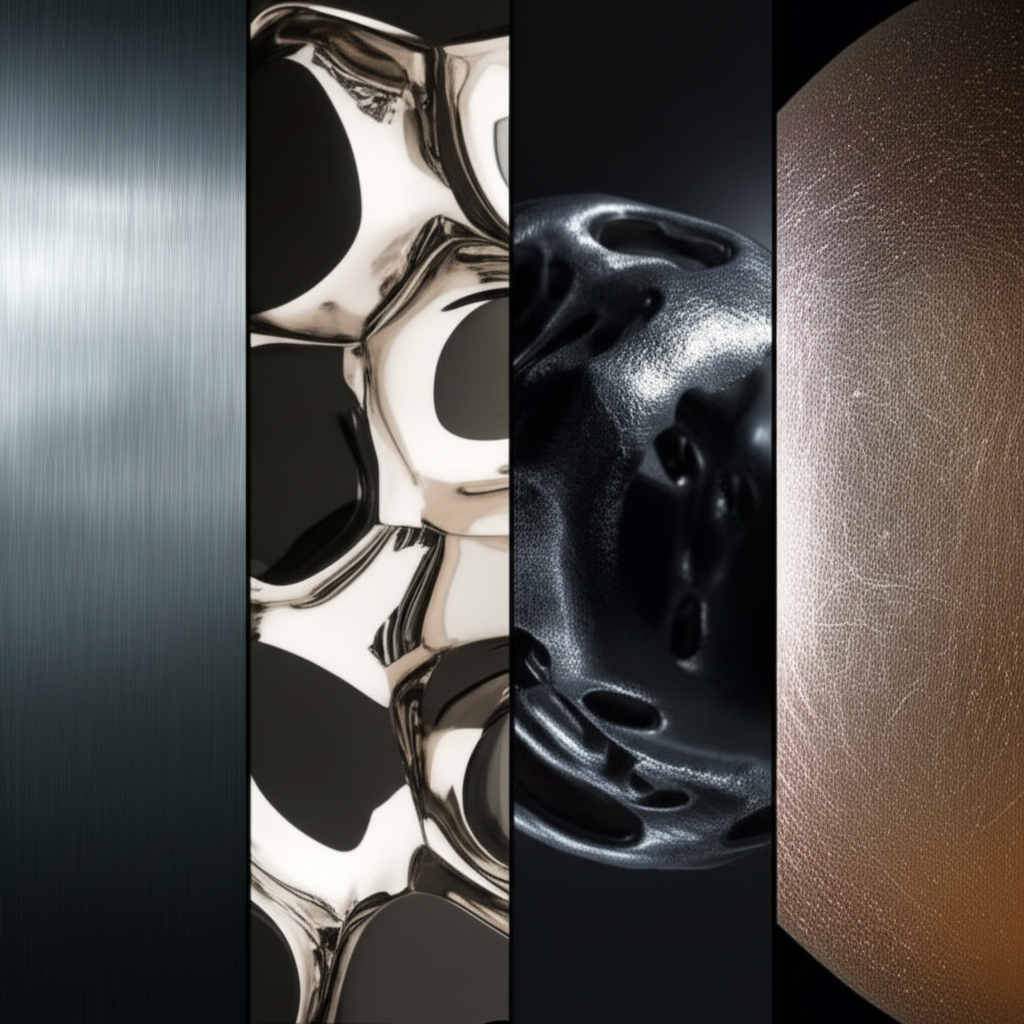Essential Criteria for Custom Medical Implants Machining

TL;DR
Custom medical implants machining is a specialized manufacturing process that uses high-precision Computer Numerical Control (CNC) technology to create patient-specific devices. These implants are crafted from biocompatible materials like titanium, stainless steel, and advanced polymers. Success in this field hinges on selecting a manufacturing partner with proven expertise, advanced technological capabilities, and critical certifications, such as ISO 13485, to ensure the highest standards of safety and quality.
Understanding the Core Process: What is Custom Medical Implant Machining?
At its core, custom medical implant machining is a subtractive manufacturing process that uses computer-controlled machinery to precisely remove material from a solid block to create a finished part. This method transforms digital blueprints, typically from Computer-Aided Design (CAD) models, into physical, highly accurate medical components. The process is essential for producing devices that must meet exact specifications to ensure patient safety and efficacy. Unlike mass-produced items, these implants are often tailored to an individual patient's unique anatomy, which demands exceptional precision and repeatability.
The primary technologies involved are CNC milling and turning. CNC milling uses rotating multi-point cutting tools to shape a stationary workpiece, ideal for creating complex geometries. CNC turning, on the other hand, rotates the workpiece against a single-point cutting tool, which is perfect for cylindrical parts like bone screws and spinal rods. Modern facilities often utilize advanced multi-axis machines, such as 5-axis CNC centers, which can approach the workpiece from multiple directions simultaneously. This allows for the creation of incredibly intricate shapes in a single setup, reducing production time and minimizing the risk of error.
This level of precision is non-negotiable in the medical field. An improperly manufactured implant can lead to device failure, patient complications, or the need for revision surgeries. The tight tolerances achieved through CNC machining—sometimes as fine as 0.0001 inches—ensure that an implant fits perfectly, functions as intended, and integrates seamlessly with the human body. This precision is critical not only for the implant's initial fit but also for its long-term durability and performance, directly contributing to positive patient outcomes.
Essential Criteria for Selecting a Machining Partner
Choosing the right partner for custom medical implant machining is a critical decision that directly impacts product quality and patient safety. A systematic evaluation of potential suppliers based on a few key criteria can help ensure you collaborate with a manufacturer capable of meeting the industry's stringent demands.
-
Certifications and Regulatory Compliance
The most crucial credential to look for is the ISO 13485:2016 certification. This standard specifies the requirements for a quality management system where an organization needs to demonstrate its ability to provide medical devices and related services that consistently meet customer and applicable regulatory requirements. A certified partner has proven processes for design, manufacturing, risk management, and traceability, which are essential for FDA compliance and market approval. -
Technological Capabilities and Equipment
The complexity of modern medical implants requires state-of-the-art equipment. Look for partners who invest in advanced technology like 5-axis CNC machining, Swiss CNC turning, and wire EDM. These technologies enable the production of highly complex parts with exceptional accuracy. For instance, a provider like XTJ, which offers rapid prototyping and volume production, utilizes advanced 4 and 5-axis CNC machining to handle over 30 materials with tolerances down to +/- 0.005mm. Services like these, backed by ISO 9001 certification, indicate a high level of technical proficiency and commitment to quality. You can learn more about their capabilities at XTJ CNC Machining Services. -
Material Specialization and Expertise
Medical implants are made from a specific range of biocompatible materials. A prospective partner must have extensive experience working with materials like titanium (e.g., Ti 6Al4V ELI), cobalt-chromium, stainless steels (e.g., 316L), and medical-grade polymers like PEEK. Their expertise should extend beyond simply machining these materials to understanding their unique properties, how they react under stress, and how to maintain their integrity throughout the manufacturing process. -
Quality Control and Inspection Processes
Rigorous quality control is fundamental. Inquire about a potential partner's inspection processes. They should employ a range of metrology tools, such as coordinate measuring machines (CMMs), optical comparators, and surface finish testers, to verify that every component meets its specified dimensions and surface characteristics. A robust quality system ensures that from raw material procurement to final inspection, every step is monitored and documented.
Key Materials in Medical Implant Manufacturing
The choice of material is critical to the success of a medical implant, as it must be biocompatible, durable, and possess the specific mechanical properties required for the application. CNC machining is adept at handling the specialized materials most commonly used in the medical industry.
Titanium and its Alloys
Titanium, particularly alloys like Ti 6Al4V and Ti 6Al4V ELI (Extra Low Interstitials), is a dominant material in orthopedics and dental implants. Its popularity stems from an excellent strength-to-weight ratio, superior corrosion resistance, and exceptional biocompatibility. The human body readily accepts titanium, allowing for osseointegration, where bone grows directly onto the implant's surface. It is commonly used for joint replacements (hip, knee), bone screws, and spinal fixation devices.
Stainless Steel
Medical-grade stainless steel, such as 316L, offers high strength, corrosion resistance, and is easily sterilized. While it has been historically significant, its use in long-term implants has sometimes been superseded by titanium due to titanium's superior biocompatibility. However, stainless steel remains a cost-effective and reliable choice for temporary devices like fracture plates and screws, as well as for many surgical instruments.
Cobalt-Chrome Alloys
Cobalt-chromium alloys are known for their incredible strength, hardness, and wear resistance, making them ideal for applications subjected to significant mechanical stress. These properties are particularly valuable for the articulating surfaces of hip and knee replacements, where smooth movement and long-term durability are essential. Their high resistance to wear minimizes the generation of debris, which can cause adverse reactions in the body.
Medical-Grade Plastics (Polymers)
High-performance polymers like PEEK (Polyether Ether Ketone) have become increasingly popular. PEEK offers a modulus of elasticity similar to human bone, which can reduce stress shielding and promote better load distribution. It is also radiolucent, meaning it does not interfere with medical imaging like X-rays or MRI scans. PEEK is often used in spinal fusion cages and other orthopedic applications.
| Material | Key Properties | Common Applications |
|---|---|---|
| Titanium Alloys | High strength-to-weight ratio, excellent biocompatibility, corrosion resistance | Joint replacements, spinal implants, dental screws, pacemaker cases |
| Stainless Steel (316L) | High strength, good corrosion resistance, cost-effective | Bone plates and screws, surgical instruments |
| Cobalt-Chrome | Excellent wear resistance, high strength, hardness | Articulating surfaces of hip and knee implants |
| PEEK | Modulus similar to bone, radiolucent, biocompatible | Spinal fusion cages, suture anchors, trauma fixation plates |

Common Applications and Types of Machined Implants
Custom CNC machining is the enabling technology behind a vast array of life-changing medical implants and devices. The ability to create complex, patient-specific components has revolutionized treatment across several medical disciplines. The applications range from replacing large joints to fixing tiny bones, each requiring the utmost precision.
The most common applications can be grouped into several key categories:
- Orthopedic Implants: This is one of the largest fields for machined implants. It includes devices designed to replace or support bones and joints. Common examples are total hip and knee replacements, shoulder implants, bone plates, and fixation screws used to hold fractured bones together while they heal.
- Spinal Implants: The spine requires incredibly complex and robust devices to restore stability and correct deformities. Machined components include pedicle screws, spinal fixation rods, connectors, and interbody fusion cages that help join two or more vertebrae.
- Dental Implants: CNC machining is used to create dental implants, typically made of titanium, that serve as artificial tooth roots. It also produces the abutments that connect the implant to the crown, requiring precise fits for long-term success.
- Cranio-Maxillofacial (CMF) Implants: These implants are used to reconstruct facial bones after trauma or surgery. Custom-machined cranial screws and plates for cranial fixation systems are vital for these delicate procedures.
- Cardiovascular Devices: While not always fully machined, components for devices like pacemakers (often the casing) and infusion ports require precision manufacturing to ensure they are hermetically sealed and biocompatible.
Beyond these categories, CNC machining is also essential for producing the highly precise surgical instruments used to place these implants. Tools like scalpels, forceps, retractors, and custom drill guides must be manufactured to the same exacting standards as the implants themselves to ensure successful surgical outcomes.
Making the Right Choice for Patient Success
The journey from a digital design to a life-enhancing medical implant is complex and demands a manufacturing process where there is no margin for error. As we've explored, custom medical implant machining is a sophisticated field that blends advanced technology with deep material science and rigorous quality control. The precision of CNC technology allows for the creation of devices that are not only anatomically accurate but also durable and safe for long-term use within the human body.
When selecting a manufacturing partner, the focus must extend beyond mere technical capabilities. A truly competent partner demonstrates a profound commitment to quality, evidenced by certifications like ISO 13485, and possesses specialized expertise in handling biocompatible materials. Ultimately, the right choice ensures that the final product will perform flawlessly, contributing to better patient outcomes and advancing the possibilities of modern medicine.

Frequently Asked Questions
1. Why is ISO 13485 certification so important for medical machining?
ISO 13485 is the international standard for quality management systems in the medical device industry. A certified manufacturer has demonstrated that its processes—from design and development to production and delivery—meet stringent regulatory and safety requirements. This certification ensures traceability, risk management, and process validation, which are critical for producing safe and effective medical implants and minimizing risks to patients.
2. What is the difference between 3-axis and 5-axis CNC machining for medical parts?
3-axis CNC machines move the cutting tool along three linear axes (X, Y, and Z). This is effective for simpler parts. 5-axis CNC machining adds two rotational axes, allowing the cutting tool to approach the workpiece from any direction. This capability is crucial for creating the complex, organic, and intricate geometries often found in advanced medical implants like knee joints or spinal devices, as it can produce them in a single setup with higher precision and efficiency.
3. How are custom, patient-specific implants designed?
Patient-specific implants are typically designed using medical imaging data, such as CT or MRI scans. This data is used to create a precise 3D digital model of the patient's anatomy. Engineers then design an implant that perfectly matches these unique anatomical features. This CAD model is then fed into the CNC machine, which machines the final custom implant from a block of biocompatible material.





